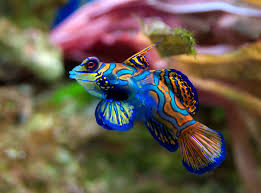There's just as much going on under the ocean's surface as above! Here's my firsthand account of exploring the island's beauty, both above and below the crystal blue sea.
While we were in Palau, the local government hosted us on a boat trip as a gesture of thanks for our volunteer services.
In addition to learning a lot about the fascinating World War II history of the area, we got to snorkel and explore several areas known for stunning sea life. My experience was nothing short of incredible.
I've had the opportunity to snorkel and scuba dive in many places around the world. Yet the snorkeling is this region was far and above anything I'd ever seen. There's a reason why this is an area many scuba divers have on their bucket lists.
Palau reefs are hosts to over 300 species of coral, nine species of sea grass, and 2,000 species of fish! (PBS)
While snorkeling, I spotted tons of yellow tail, parrot fish, mandarin fish, many different species of butterfly fish and angel fish, giant clams as large as 4-5 feet across, a lucky sea turtle (visible at end of video below!), and tons of colorful species of fish who's names I do not know.
Here's some of the underwater video I recorded. Watch for the big sea turtle at the end, skipping along the floor of the ocean. I felt as though I was in the middle of Finding Nemo! It was a truly unforgettable experience. How may species of fish can you see?
NOTE: While snorkeling, we noticed oil on the surface of the water (you can see it in the video above). Our guide explained what it was: sunscreen. While reef-damaging sunscreen is legally banned on the islands, many tourists ignore the law and use it anyway. It leaves a film on the water and permanently damages the reefs. Palau has taken a great effort to ban these sunscreens, and offer an alternative for sale in local stores.
In fact, Palau takes this commitment so seriously that when you arrive at customs you are expected to sign a pledge that you will take care of the local environment and not use damaging products.
Explore the Milky Way
The Milky Way is a beautiful, secluded lagoon within the Rock Islands. Over hundreds of thousands of years, the tides have been bringing in water enriched with limestone and chalk particles sunk to the bottom, creating a thick layer of white, rich mud.
The locals say that when you rub yourself with the white (and very smelly) mud, you will look ten years younger after you rinsed it. Ten years? Um, sign me up!

I wanted to really get the biggest bang for my buck. (Why wouldn't I?) I figured if you could have the mud on your skin for just a while and have amazing results, why not let it sit there for a significant amount of time?
So rather than just apply it for the few minutes we were in the lagoon, I brought a small bucket of mud back with me. When we got back to our beach I covered myself thoroughly, and baked in the sun for about an hour. Do you think it worked? (Please be gentle.)
Take a Jungle Hike
Since Palau sits so close the equator, the climate is warm and humid. The average temperature is around 86F. Because of this climate, hike through the jungles can reveal some pretty gorgeous tropical plants.
I stopped in my tracks when I came across this pineapple. I had no idea how pineapples were born!



Jellyfish Everywhere
And finally, the jellyfish.
Palau is home to a unique lake filled with jellyfish. The lake is located on Eil Malk Island, and every day millions of golden jellyfish migrate across the lake. Yes, you can swim with them!

How is this possible? Well, this specific species has evolved without stingers.
"The jellyfish in the lake live on algae that are attached to them. Twice each day, the jellyfish in the lake swim from one side to the other so they algae they live off of can grow. Since they live off of algae, they don’t need their stingers to catch prey. That means that you can swim with them and not worry about getting stung." (Nomadic Matt)
In 2005, around 30 million jellyfish were in the lake, though that number was in decline for many years. By 2016, there were almost none. In recent years, swimming was deemed forbidden due to declining numbers of the jellyfish.
However, in 2019 it was determined that the population had increased enough again to allow swimmers in the lake. Fortunately, around 700,000 jellyfish are now back in the lake, and scientists are optimistic about the numbers continuing to grow.
Here's the underwater video I recorded. Yes, at first it was terrifying! But after getting used to being bumped into constantly by these harmless creatures, it's a pretty incredible experience.
Jellyfish Lake is around 12,000 years old. It was formed as a result of the last ice age during which the sea level rose to the point where seawater began to fill the basin. But then the glaciers receded, and there was no place for these jellyfish (or other fish) to go. This isolation allowed the species in the lake to develop on their own and become unique.
No matter where you go on Palau there is something unique and colorful for you to discover. Have you been to Palau and took away different highlights? Please share them with me because I would love to know. And if you're headed to Palau, have an amazing time, and remember to leave that nasty sunscreen at home.
Thank you for reading my highlights of Palau! Learn more about my experience, including Palau's role in World War II.
Happy traveling!















Comments